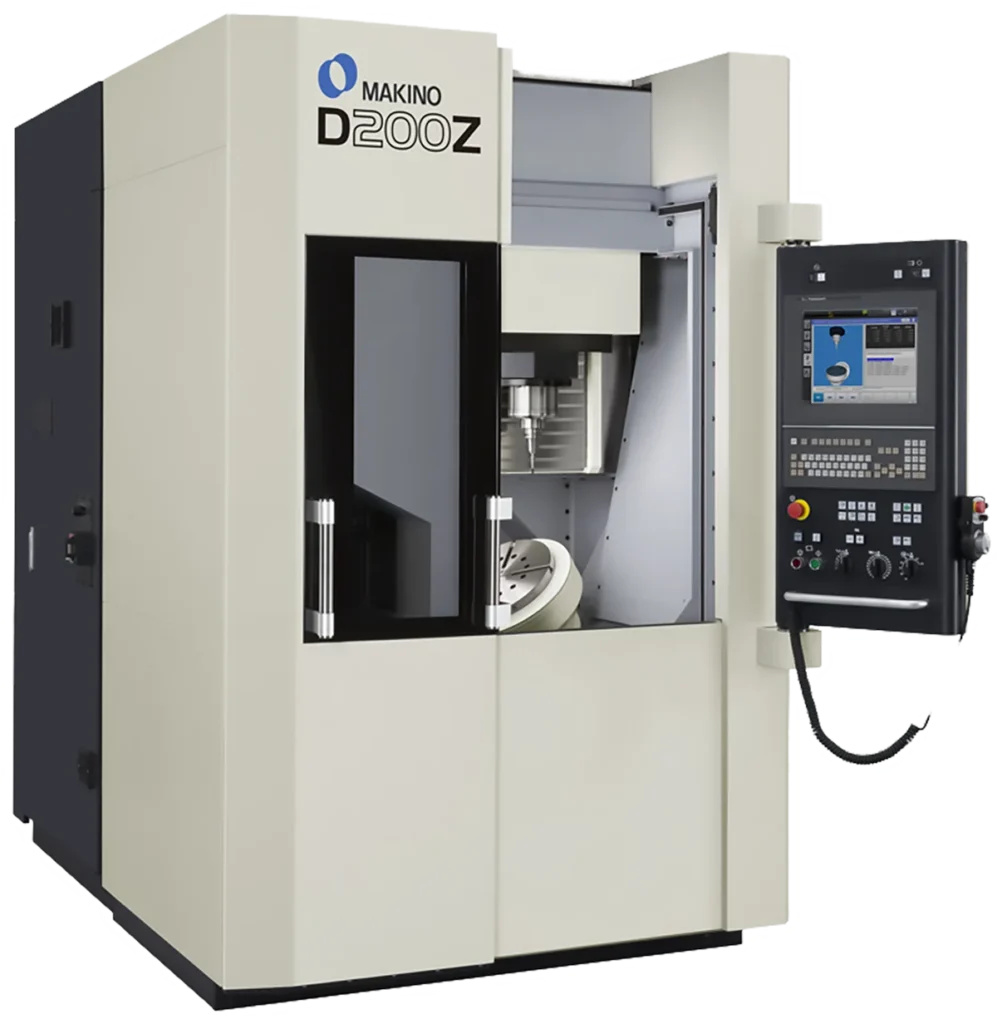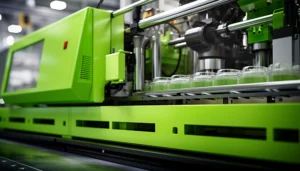High-speed CNC Machine Spindles are used in a wide range of industrial sectors – from highly precise metal machining, through the production of components for the aerospace industry, to detailed work in the watchmaking industry – high-speed spindles are a fundamental pillar of modern manufacturing. Their ability to effectively process various materials at extreme rotational speeds brings significant advantages compared to traditional machining methods. High-speed CNC Machine Spindles bring revolution not only in speed and precision but also in the universality of processing various materials, thus significantly expanding the possibilities of design and production. This blog will guide readers through the world of these innovative tools, presenting their key features, principles of operation, and highlighting their indispensable role in enhancing the competitiveness and innovativeness of today’s manufacturing companies.
In today’s era, where the industry is constantly seeking ways to increase efficiency and precision in manufacturing processes, high-speed spindles represent a key technology with the potential to transform many aspects of production. These sophisticated components, capable of reaching immense rotational speeds, are invaluable tools in the hands of modern manufacturers, enabling them to work faster, more accurately, and with greater material flexibility than ever before. This blog offers insights into what high-speed spindles are, how they work, and why every industry expert should take note of them. We will explore their technical specifications, applications in various industrial sectors, and discuss the main benefits they bring to manufacturing processes. Whether you are an engineer, a production manager, or just a technology enthusiast, this blog will provide you with a comprehensive overview of how high-speed spindles can contribute to innovation in your production.
Construction and types of spindles in the metalworking industry
Basic construction
High-speed spindles for the metalworking industry are designed to withstand extreme loads and temperatures generated during high-speed machining. The basic construction of these CNC Machine Spindles includes:
Rotational axis
The core component of the spindle, rotating at high speed, is made of highly durable materials such as hardened steel or ceramics to withstand significant forces and temperatures.
Bearings
Critical for precise and stable operation at high speeds. High-speed spindles require special bearings, such as ceramic bearings or high-precision bearings, which minimize friction and wear.
Cooling system
Effective heat dissipation is essential for maintaining the optimal temperature of the spindle. Various cooling methods are used, including internal cooling through the circulation of cooling fluid or external cooling with air or oil.
Drive
Electric spindles are most commonly used in metalworking industries, where an electric motor integrated directly into the spindle construction enables high speeds. Drive can also be achieved through pulleys, allowing variable speeds and adaptability to different types of machining.
Maximum speeds (RPM) of high-speed CNC Machine Spindles
One of the most important performance characteristics of high-speed spindles, especially in the context of metalworking operations, is their maximum speeds, expressed in revolutions per minute (RPM). This value is a critical factor influencing the selection of a spindle for specific manufacturing applications, as it directly affects the speed and efficiency of the machining process.
Range of speeds
High-speed spindles in metalworking operations typically offer a speed range from 20,000 to over 100,000 RPM. This wide range allows the manufacturer to adjust the machining speed according to the material and the required operation, whether it is fine drilling, detailed milling, or high-speed machining.
Our company, CDL, is proud to have in our manufacturing arsenal a state-of-the-art CNC machining 5-axis center from Makino, equipped with a high-speed spindle with a maximum speed of up to 30,000 RPM.

Advantages of using such spindles
The use of high-speed CNC Machine Spindles in the metalworking sector brings a series of technological and production advantages that significantly increase the efficiency and precision of machining processes. These advantages are crucial for improving the competitiveness and innovative capacity of manufacturing companies. Below are detailed the main benefits of implementing high-speed spindles from a technical perspective.
Increase in productivity of machining processes
Increasing the productivity of machining processes through the implementation of high-speed spindles represents a fundamental shift in the paradigm of metalworking production, based on more efficient material removal and optimization of production cycles. This phenomenon can be scientifically explained through several key mechanisms and physical principles that are activated when using high speeds in the machining process.
Thermodynamic properties of cutting
At higher spindle speeds, changes occur in the thermodynamic properties of the cutting process. The temperature in the cutting zone increases, which may result in a decrease in the material strength at the cutting point. This phenomenon allows the tool to remove material with less resistance, reducing the force required for cutting and enabling faster tool movements, thereby increasing the overall productivity of the process.
Dynamics of the cutting process
Increased spindle speeds significantly influence the dynamics of the cutting process. Higher tool rotation speeds improve heat dissipation from the cutting zone, reducing tool thermal damage and increasing its lifespan. Similarly, chip evacuation from the cutting zone is improved, minimizing the risk of chip jamming and increasing process reliability.
Material removal efficiency
High speeds enable more efficient material removal by optimizing the cutting regime. At higher rotation speeds, thinner and sharper tools can be used, requiring less cutting pressure, thus reducing the overall mechanical load on the workpiece and the machine. This principle allows for increased feed rates and cutting depths, directly leading to an increase in the amount of material removed per unit of time.
Summary
From a technical perspective, it can be concluded that increasing the productivity of machining processes through the use of high-speed spindles is the result of a complex interaction of thermodynamic, mechanical, and material factors. Together, these factors enable faster and more precise machining with lower operating costs and improved product quality. The result is a significant increase in the efficiency and productivity of manufacturing processes, which is essential for maintaining competitiveness in today’s rapidly changing industrial environment.
Optimization of surface characteristics and dimensional accuracy
Optimization of surface integrity and microstructure of the workpiece is a key aspect in increasing the quality and functionality of manufacturing components, directly influenced by the use of high-speed spindles in machining processes. Increased spindle speeds induce less mechanical and thermal stress in the workpiece compared to traditional machining processes, leading to a more pronounced improvement in microstructural homogeneity and reduction in surface defects.
From the perspective of thermomechanical interaction, at high speeds, rapid heat dissipation from the cutting zone minimizes the risk of thermal damage to the workpiece, such as burns or microcracks. This effect is crucial for maintaining the microstructural integrity of the material, as it maintains a stable and predictable structure throughout the surface of the workpiece.
At the microscopic level, high-speed machining promotes the formation of a finer and more uniform chip, reducing mechanical stress on the workpiece surface. This process also promotes the creation of smoother and more uniform surfaces, reducing the phenomenon of “pull-out” (grain pulling), which is particularly important when machining materials with heterogeneous microstructure.
Additionally, high-speed spindles allow the use of finer and more precise cutting tools, ensuring minimal pressure on the workpiece during cutting and thereby reducing mechanical deformation and improving the geometric accuracy of the product. This technique also contributes to the improvement of microstructural cleanliness of the cutting zone by reducing the occurrence of microcracks and improving the adhesion of coatings if applied subsequently.
In the context of product sustainability and longevity, improved surface integrity and optimal microstructure obtained through high-speed machining increase the durability of components against wear, corrosion, and fatigue phenomena. This represents a significant added value for applications where high demands are placed on material.





